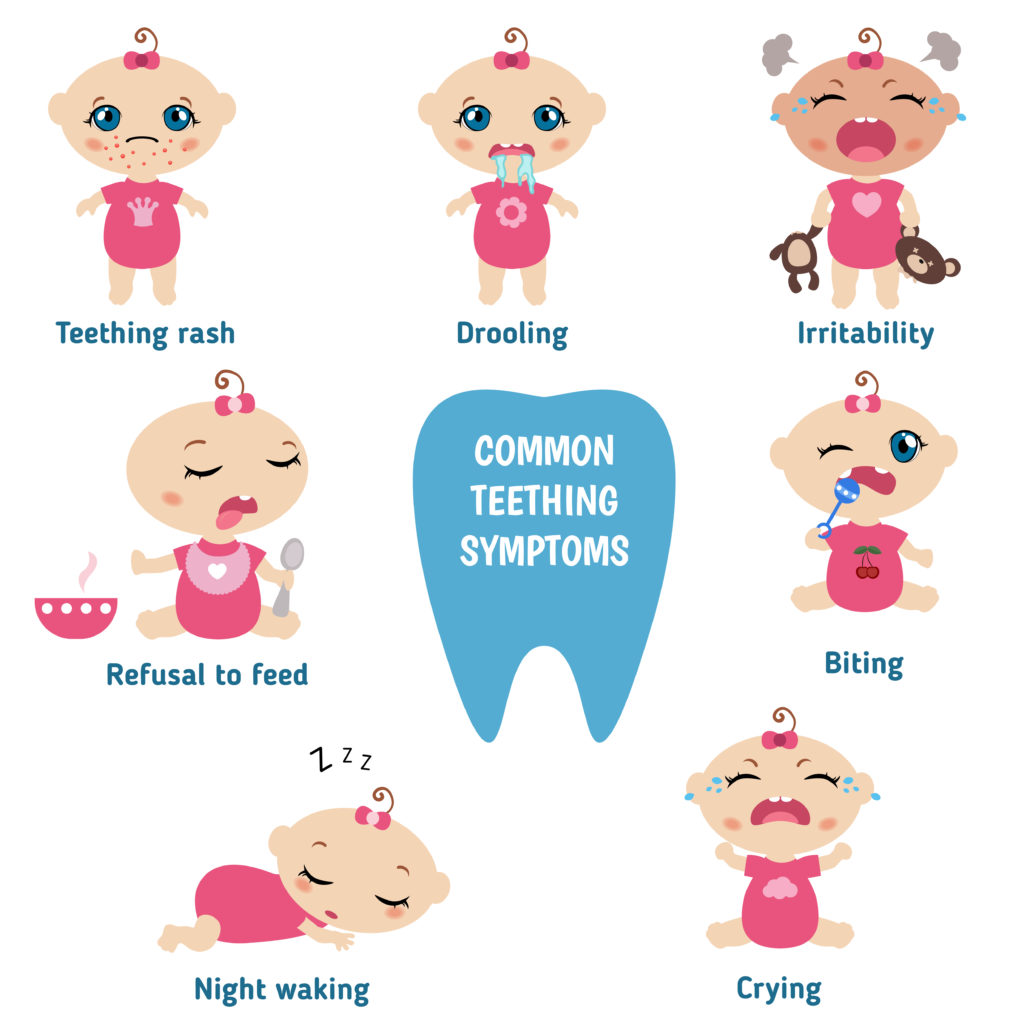Teething
What is Teething?
When to expect the first tooth?
The first primary tooth appears during infancy at around 6 months of age. The various primary teeth continue to be in different stages of eruption from 6 months of age till the next two and a half years. By three years of age a child would have developed almost all the primary teeth. Not all children may stick to this schedule of teeth eruption. There can be some premature or late eruption of teeth as well, in which case it is recommended to visit your Pediatric dentist to diagnose if it is normal or there is some pathology involved.
Symptoms of Teething
- Pain
- Inflammation of mucous membrane overlying the tooth (possibly with small hemorrhages)
- General irritability / malaise
- Disturbed sleep / wakefulness
- Facial flushing (le feu des dents) / circumoral rash
- Drooling / sialorhoea
- Gum rubbing / biting / sucking
- Bowel upset ( ranging from constipation to loose stools and diarrhea )
- Loss of appetite / alteration in volume of fluid intake
- Ear rubbing on the same side as the erupting tooth
Can anything be done to make this process easy for the infant?
YES! There are various ways to help relieve the symptopms of an infant going through the process of infant. We can guide you with the use of various pacifiers, cold application and other easy home remedies for your child.
Different methods of Management of Teething
The different methods of management can be divided into two categories based on the use of whether medicines are to be used for the same or not. Thus the methods are divided as:
- Pharmacological management
- Non-pharmacological management
Pharmacological management of Teething
Topical agents/Ointment (To be applied)
Lignocaine-based products
Lignocaine hydrochloride is a local anaesthetic that is rapidly absorbed through mucous membrane giving prompt relief from pain. Around 7.5mm of gel should placed on a clean finger or cotton bud, and rubbed onto the painful area. 20 rninutes should elapse between approaches; only six applications should be used each day, in order to prevent systemic toxicity. Products containing lignocaine should be avoided if any sensitivity is suspected.
Dentinox Teething Gel, Calgel and Rinstead Teething Gel are specifically formulated for teething infants, the dosage of lignocaine being reduced in accordance with the much smaller body size of infants.
Choline salicyate-based products
Systemic Medicines (To be eaten)
A sugar-free paracetamol elixir is the systemic medicament of choice in teething because of its action in reducing pain and pyrexia (where present). Paracetamol act by inhibiting prostaglandin production.
Holistic Medicine
Alternative holistic medicines suggested as giving relief from the symptoms of teething are acupressure, aromatherapy, massage and homeopathy.
Accupressure
Acupressure requires the parent to apply pressure to certain key skin points. It provides immediate temporary relief from pain.
Aromatherapy
Aromatherapy uses essential oils like clove oil, tea tree oil or olive oil for massage, to neutralize inflammatory mediators produced during teething. Alternatively, chamomile oil which is recommended for teething is placed in an aromatherapy diffuser in the infant’s room.
Massage
Lorem ipsum dolor sit amet, consectetur adipiscing elit. Ut elit tellus, luctus nec ullamcorper mattis, pulvinar dapibus leo.
In presence of severe teething symptoms or discomfort we strongly advise to get your baby checked and not self-medicate. Infants with severe systemic upset should promptly referred to a physician for an accurate diagnosis and appropriate treatment
Help us, help you!


